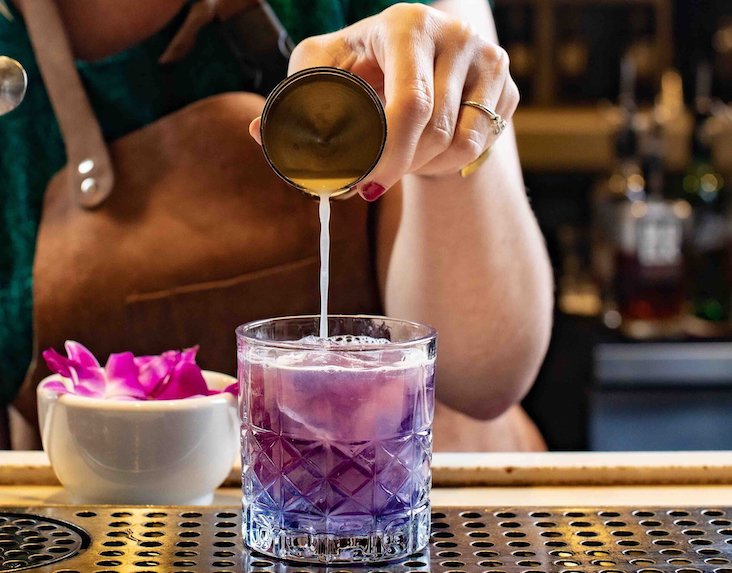Blind Tiger
Ale House
New York
David Broderick and Alan Jestice, co-owners
“I consider this an art gallery and the brewers are the artists,” contends Alan Jestice, co-owner of the Blind Tiger in New York. “My job is to show off their artwork.”
It’s quite a show. The Blind Tiger boasts 28 draft taps, two hand-drawn casks and a gravity keg, plus a selection of more than 50 bottles and an extensive list of vintage ales. And the offerings rotate constantly. Offerings range from Southhampton Saison to Hitachino XH, an American strong ale aged in sake casks.
“What is on tap right now won’t necessarily be available next week,” says Jestice. When a keg is finished, it’s switched out for a different brew. “Customers can come in and have 10 different experiences on 10 different nights,” he says.
The Blind Tiger, which refers to the Prohibition-era practice of signaling a speakeasy with a stuffed tiger in the window, opened for business 13 years ago and moved to its current Greenwich Village location in 2006. When founder David Broderick established the Blind Tiger, the craft beer movement had just started to gain momentum. People were experimenting with beers beyond Budweiser and Bass, recalls Jestice, but there weren’t many craft beer bars around. With the Blind Tiger, Broderick began highlighting smaller breweries and artisanal beers on a rotating basis. That’s still the Blind Tiger philosophy today, albeit much evolved and expanded.
Over the years, Broderick and Jestice have developed long-standing personal relationships with many of the producers. They often visit breweries and encourage brewers to send experimental and limited-edition batches for their clientele to taste. The wide variety of brews often will surprise even those well-versed in craft beer, and it’s an opportunity for newcomers to get acquainted with various beer styles.
Education is one of the hallmarks for the Blind Tiger, and the most important educational tool is the free taste. Knowledgeable staff interact with patrons to discover what their predilections are and suggest beers to match.
“We’re very event-driven,” says Jestice, partially because of the relationship with producers. The events are opportunities for consumers to meet the brewers and discover their different beer styles. For example, the recent Pacific Northwest Beer & Oyster Fest, an annual event at the Blind Tiger, featured a different Rogue beer on every tap and served up some 1,600 Yakima Bay oysters.
The sandwiches and small plates on the food menu all are made in-house, and they are priced at $11 or under. There is no fried food. To complement the beers, the food is “super fresh and simple,” says Jestice.
There’s a warm and earthy feel to the tavern. Wooden beams were salvaged from a turn-of-the-century barn, and the floor and banquets all are vintage wood. A stone fireplace adds warmth in the winter, and large windows let customers people-watch. Especially for newcomers, a relaxing environment is important for experiencing the newest drinkable creations from the brewer-artists, says Jestice.
Related Articles
Setting the Standard
Best Wine Bar
Best Cocktail Lounge




